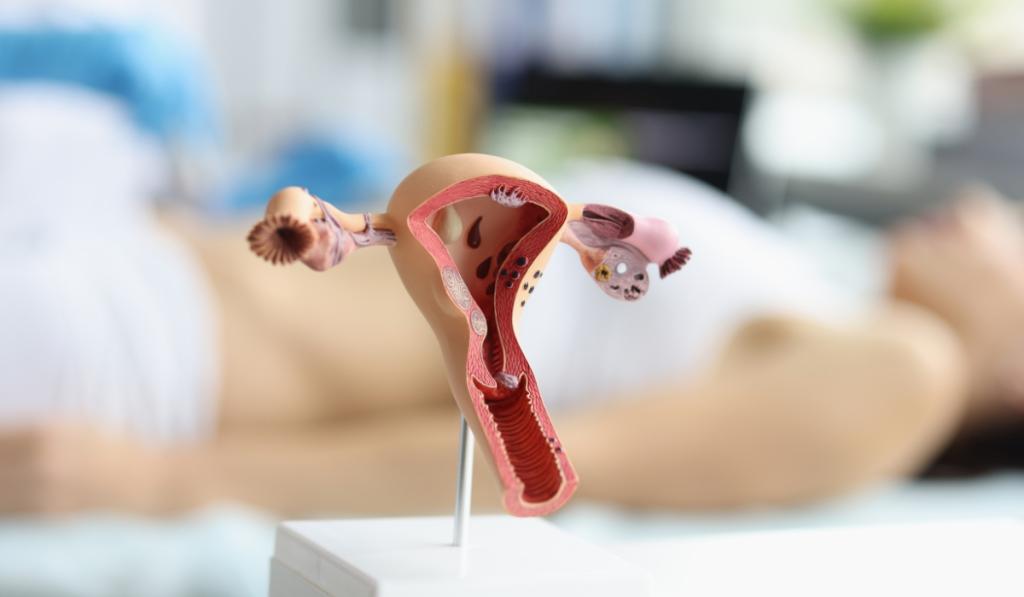AI technologies help to improve diagnosis and treatment in women’s health in a number of ways, from identifying whether cervical cancer is present in cell images of Pap smear slides, to predicting ovulation based on temperature data.
Despite these advances, the path to enabling AI in women’s health has not been an easy one. Historically, there has been an under-representation of women in health data, an issue that is still prevalent today. As a result, AI software developers have often faced a lack of sufficient and relevant data to train machine learning models on.
How does machine learning work?
The development of machine learning applications encompasses a series of essential steps. It begins with the collection and pre-processing of data, followed by the selection of a model suitable for a specific task. An appropriate model is then chosen to address the targeted objectives, such as detecting breast cancer in an image, using natural language understanding to aid diagnosis, or predicting hormone levels.
Once the model has been selected, it undergoes training using a subset of the data, typically around 80% of the dataset, to learn patterns and relationships. Subsequently, the model is tested using the remaining data, usually around 20%, to assess its performance and fine-tune it if necessary.
Finally, the trained model is deployed, creating an endpoint that can make inferences on new data, enabling real-world applications of the AI system. This iterative process of data gathering, model selection, training, testing, and deployment forms the foundation for developing robust and effective machine learning applications in healthcare and even beyond.
Missing women's health data
There are various areas where women’s health data has historically been under-represented or missed. Examples include:
Clinical trial representation
Historically, women have been significantly underrepresented both as researchers and participants in clinical trials. In fact, in 1977, the FDA prohibited women of child-bearing potential from participating in early phase clinical trials. While there has been some progress since then, with an average inclusion rate of 42% for women in clinical trials, it is clear that women still face under-representation in this crucial area of research.
Symptom awareness
Many medical conditions affect women and men differently, but the focus on symptoms and awareness campaigns has mostly been centred around males. For instance, common conditions like heart attacks and strokes have predominantly emphasised male symptoms, leaving women at a disadvantage when it comes to recognising and seeking timely medical attention for their specific symptoms.
Gender disparities in medication
Women have been found to be 50-75% more prone to experiencing adverse drug reactions compared to men. Initially, this difference was attributed to variances in body weight, leading to recommendations of lower doses for women. However, it has become evident that the root cause lies in the fact that much of the research was primarily conducted on male subjects, leading to a lack of understanding about the unique responses and interactions women may have with medications.
Neglected conditions and diagnosis
Gynaecology, the field that focuses on diagnosing and treating conditions of the female reproductive system, has often been overlooked and undervalued. A prime example is endometriosis, a condition where endometrial tissue grows outside the uterus. It affects up to 10% of women between the ages of 25 and 40, yet the average diagnosis time is still a staggering 7 years. This prolonged delay in diagnosis and treatment reflects the historical neglect of gynaecological conditions, leading to unnecessary suffering and reduced quality of life for countless women.

Improving AI women's health data
By addressing these issues and working towards greater gender inclusivity in research, clinical trials, symptom awareness, and specialised medical fields like gynaecology, we can ensure better healthcare outcomes and improved well-being for women around the world.
In recent years, we have already seen a number of advancements in this area, for example in birth control applications. Throughout history, women have diligently tracked their menstrual cycles, even leaving traces of their recordings on cave walls and in artwork. However, progress in birth control options for women remained relatively stagnant after the creation of the first birth control pills in the 1950s. Fast forward 70 years, women now have access to innovative methods of tracking their menstrual cycle and fertility, aided by temperature measurements and AI technology. The company Natural Cycles has emerged as a pioneer in this area by introducing the first FDA-cleared birth control app. This app empowers women with a reliable and scientifically–backed solution for contraception.
Similarly, AI-powered technologies are now offering significant advancements in screening, diagnosis, treatment and overall healthcare management for women. With access to more data, AI algorithms are now enabling more accurate and timely detection of conditions such as breast cancer, cervical cancer and endometriosis. For example, researchers are currently using AI and imaging techniques to develop a less invasive method for diagnosing endometriosis, which will significantly improve the lives of women who previously had to wait years for endometriosis diagnosis.
The need for more women's health data
While machine learning and AI technology hold tremendous potential for advancing women’s health, it is crucial to acknowledge that the effectiveness of these tools heavily relies on the quality and inclusivity of the underlying data. The true power of AI and women’s health can only be harnessed when it is trained on diverse and representative datasets that encompass the unique health experiences of women.
Given the historical gaps in women’s health data, it is imperative to shift our focus towards actively gathering high-quality data and ensuring the inclusion of women at every stage of research, development, and implementation of AI solutions for women’s health. By doing so, we can unlock the full potential of AI and drive meaningful improvements in healthcare outcomes, promoting the well-being and empowerment of women.



